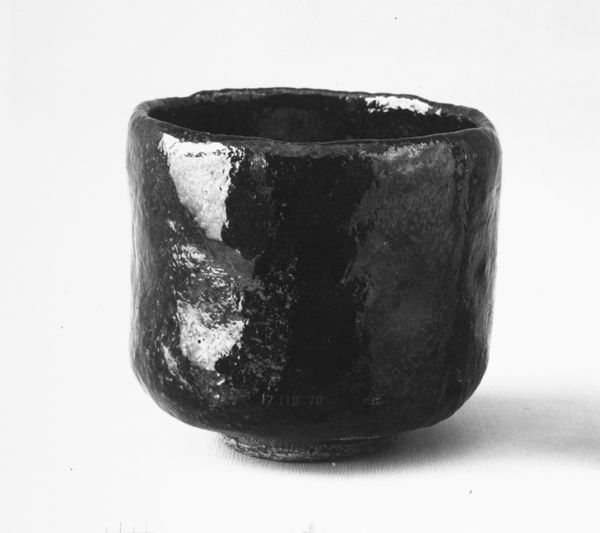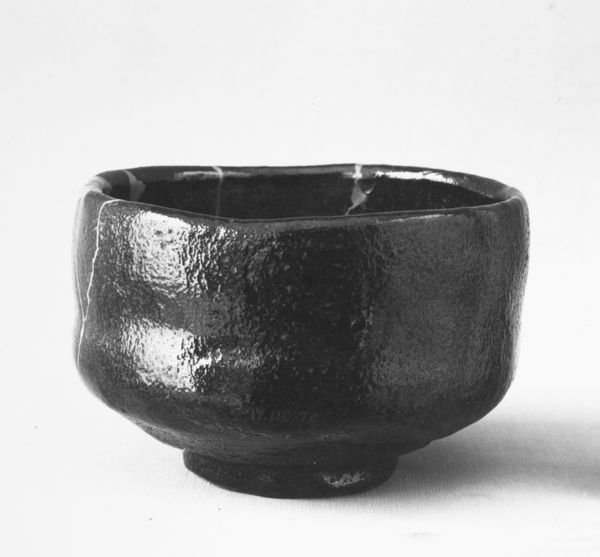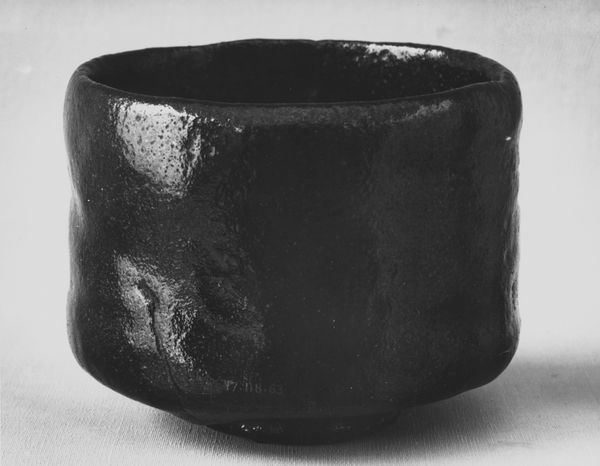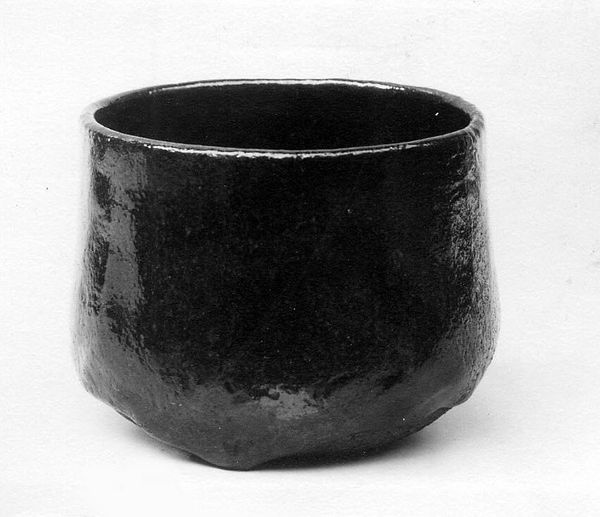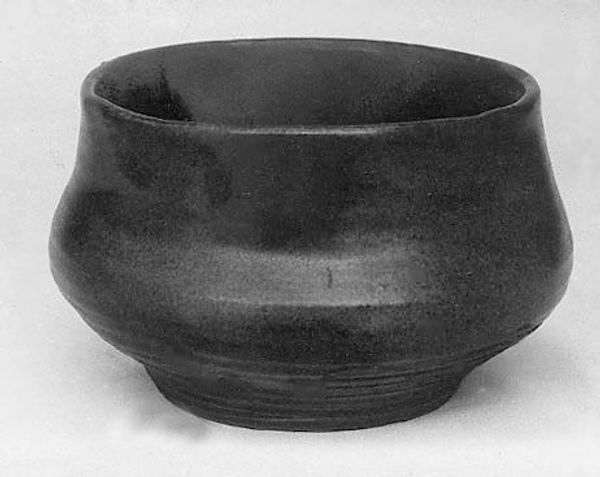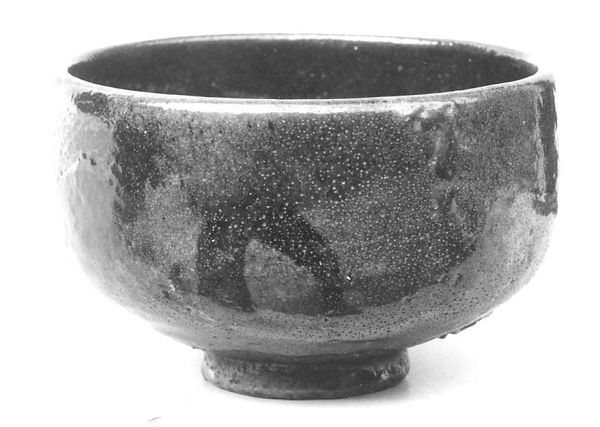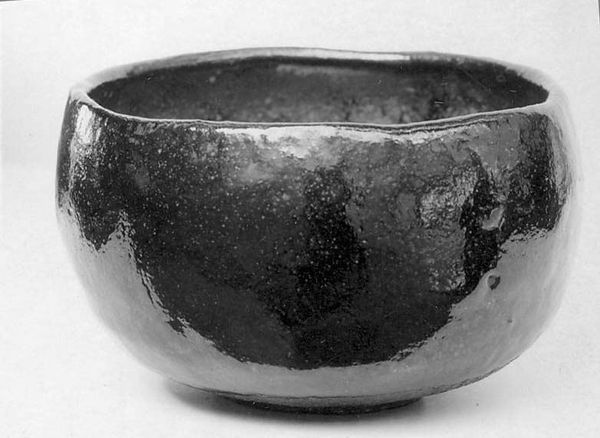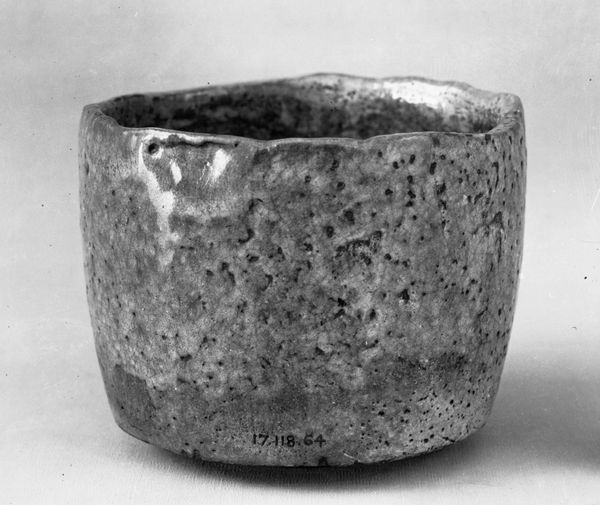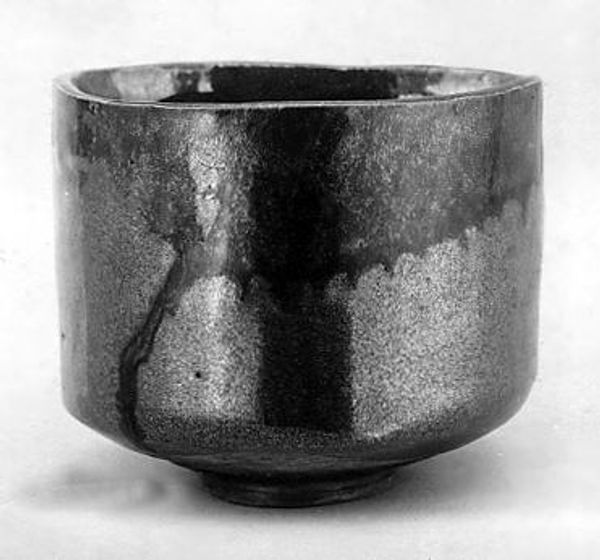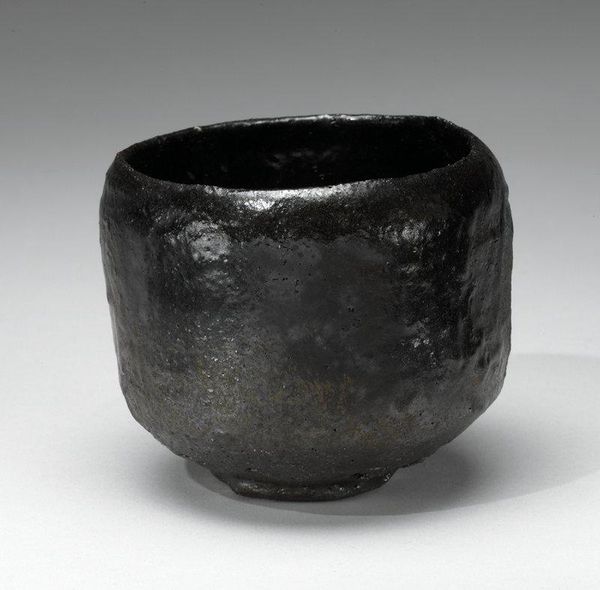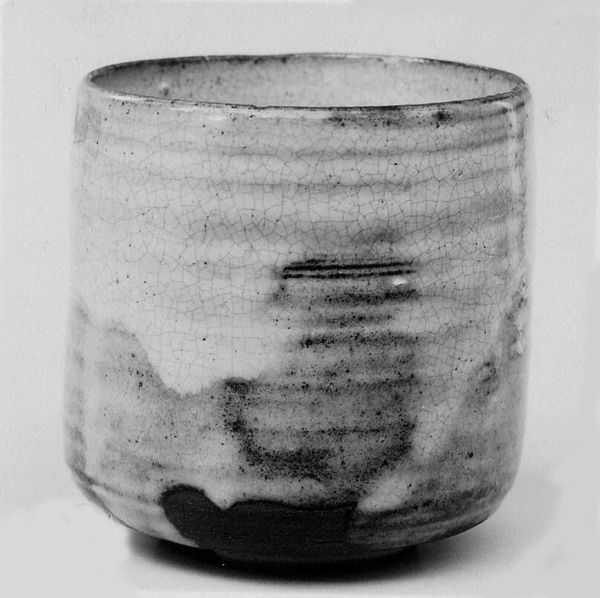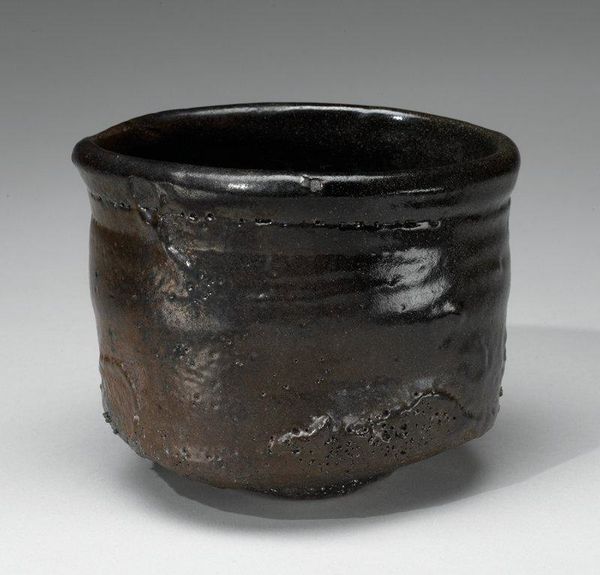
ceramic, earthenware
#
medieval
#
asian-art
#
ceramic
#
japan
#
earthenware
#
stoneware
#
abstraction
Dimensions: H. 3 in. (7.6 cm); Diam. 4 1/2 in. (11.4 cm)
Copyright: Public Domain
Curator: Here we have a Teabowl, created sometime between 1830 and 1850 by Kichizaemon. This particular piece resides here at the Metropolitan Museum of Art. What are your first impressions? Editor: It has this remarkable heft to it, doesn't it? And such deep, saturated glaze. The raw, earthy feel of the ceramic juxtaposed with that sheen, like holding a piece of dark volcanic rock. Curator: The black glaze immediately brings to mind Raku ware. Kichizaemon's family is deeply entwined with the history of Raku and its connection to the tea ceremony, cultivated under the patronage of the Tokugawa shogunate. Editor: Absolutely, the Raku tradition emphasizes the hand-moulding, the immediate forming of the vessel. You see it so clearly in the irregularities of the rim. No perfect symmetry here – more an embrace of the wabi-sabi aesthetic, right? It really celebrates the touch of the maker. Curator: Exactly, its tactile quality transcends mere functionality; it becomes a vessel pregnant with socio-cultural meaning, linking the participant to centuries of ritualized tradition and performative social practice. One would handle it knowing its rich background. Editor: But what is really remarkable is how the controlled conditions are eschewed here. Each firing would result in dramatically different effects. What may appear simple actually comes at the end of a sophisticated alchemy of materials, labor and intention. Curator: Yes, its aesthetic of ruggedness, in a way, signifies an anti-establishment posture against more formalized tea traditions of the time, becoming emblematic of a counter-narrative, even though its proponents operated within the confines of the Tokugawa structure. Editor: Which goes to show you that even a simple teabowl carries with it the weight of history. It encourages one to ponder not just about tea, but the very nature of process and context, as well as the very social implications tied up in every piece of material culture. Curator: Indeed. Examining such objects, reveals how interwoven art and social customs really are. Editor: It certainly allows us to rethink our common assumptions about aesthetics and craft, that is certain.
Comments
No comments
Be the first to comment and join the conversation on the ultimate creative platform.
